Imagine a video marketing campaign that is so captivating that it becomes more popular on Instagram than a Kardashian selfie. Perhaps, marketers should take cues from Elon Musk too, who is just himself on social media and beyond that Tesla needs no marketing budget today.
That's the power of a viral marketing campaign - a practical growth hack used by many relevant companies to interact with their potential customers.
Creating content that people will want to share with their friends, family, and followers is the aim of viral marketing campaigns. This can be achieved by creating brilliant, shocking, humorous, or engaging material that people find relatable.
Like a true virus, the more individuals who share the video, the more likely it is to spread and potentially affect a large number of people quickly.
Therefore, if you want to improve the popularity of your company, think about developing the best viral marketing campaigns to produce some content that people will want to share. Who knows—you might inadvertently create the next huge internet sensation!
In this article, we curate a few viral marketing examples that may inspire you for your next big viral campaign.
Successful viral marketing campaign examples
Dollar Shave Club
Do you want to learn how humor can be used to create a successful viral marketing campaign effectively?
Take cues from Dollar Shave Club's viral marketing campaign. In addition to being skillfully done, it was humorous.
Dollar Shave Club, a subscription-based company founded by Michael Dublin, sells razors and other personal care products. One of the most well-known campaign for the corporation in 2012 included a $4500 viral video.
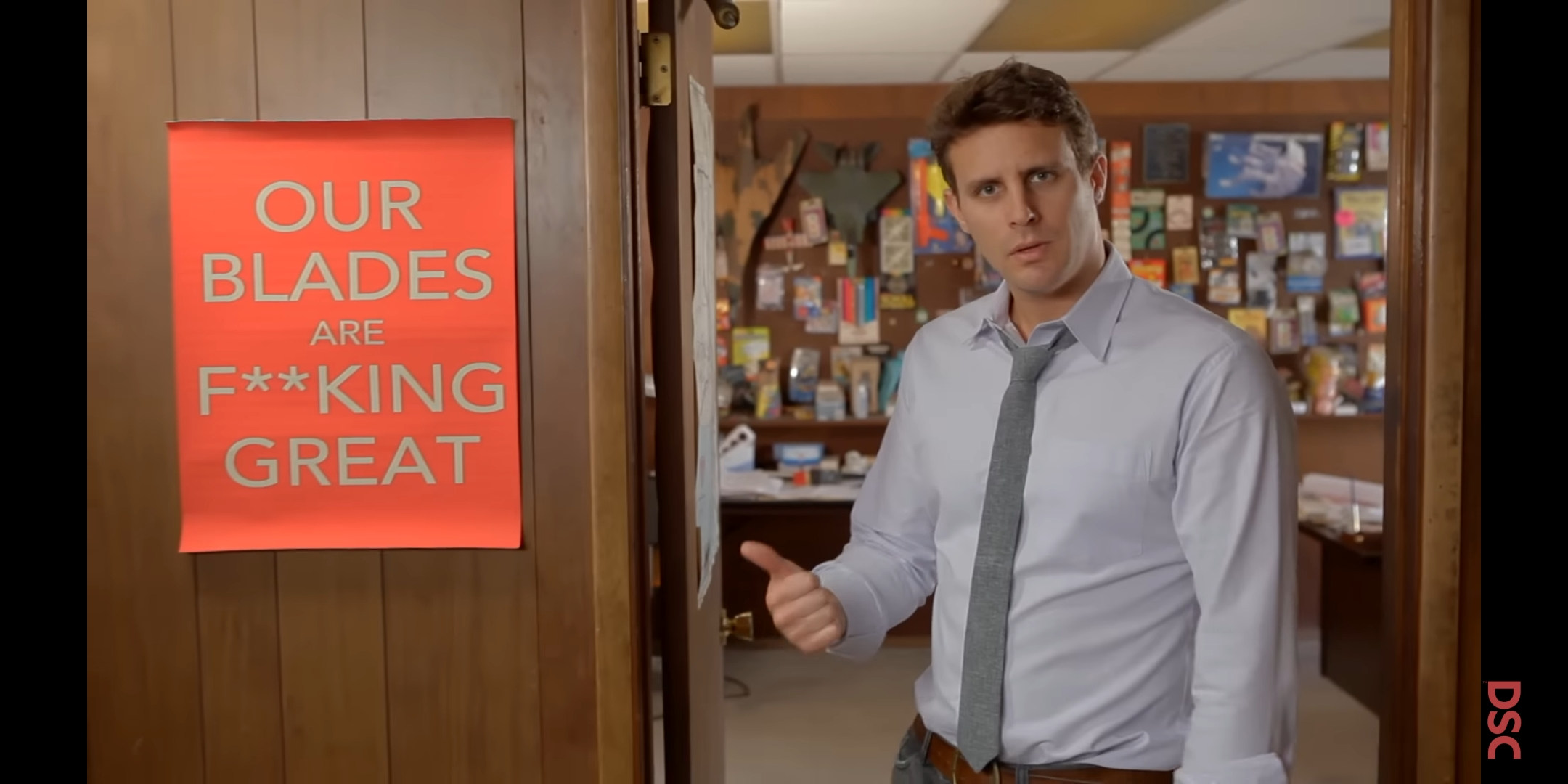
Source: YouTube
Given that Michael Dubin, the founder of the company, conveyed brand's message in the video with a sly grin and a sharp sense of humor, it was challenging to avoid being seduced by the pitch of the brand.
Thanks to the video, which attracted thousands of new customers and brought in millions of dollars in sales, the brand was successfully launched.
Why did this viral marketing strategy gained traction online?
They directly targeted their intended demographic for the video — men who were frustrated by the immense price of razor blades and the inconvenience of running out of them at the worst possible time.
With concentrated marketing, the advertisement efficiently and concisely described the company's value offer, which is to provide high-quality razors at your doorstep at a competitive price.
The commercial was widely shared on social media, which helped to broaden its target audiences and contributed to its viral success.
It serves as a great example of how memorable and effective viral video marketing campaigns can be produced by combining a clear, succinct brand message with a sense of humor and high production standards.
You can watch the full commercial video here -
Blendtec. Blenders
When it comes to marketing, what lengths would you go to?
Well, would you put your iPhone in a blender? Or maybe marbles? A golf ball maybe…
If you think this sounds ridiculous and no one would ever do that, Blendtec. begs to differ.
Blendtec is a manufacturer of powerful blenders. Blendtec's founder, Tom Dickson, devised the "Will it blend?" digital campaign, which included many infomercials style ads.
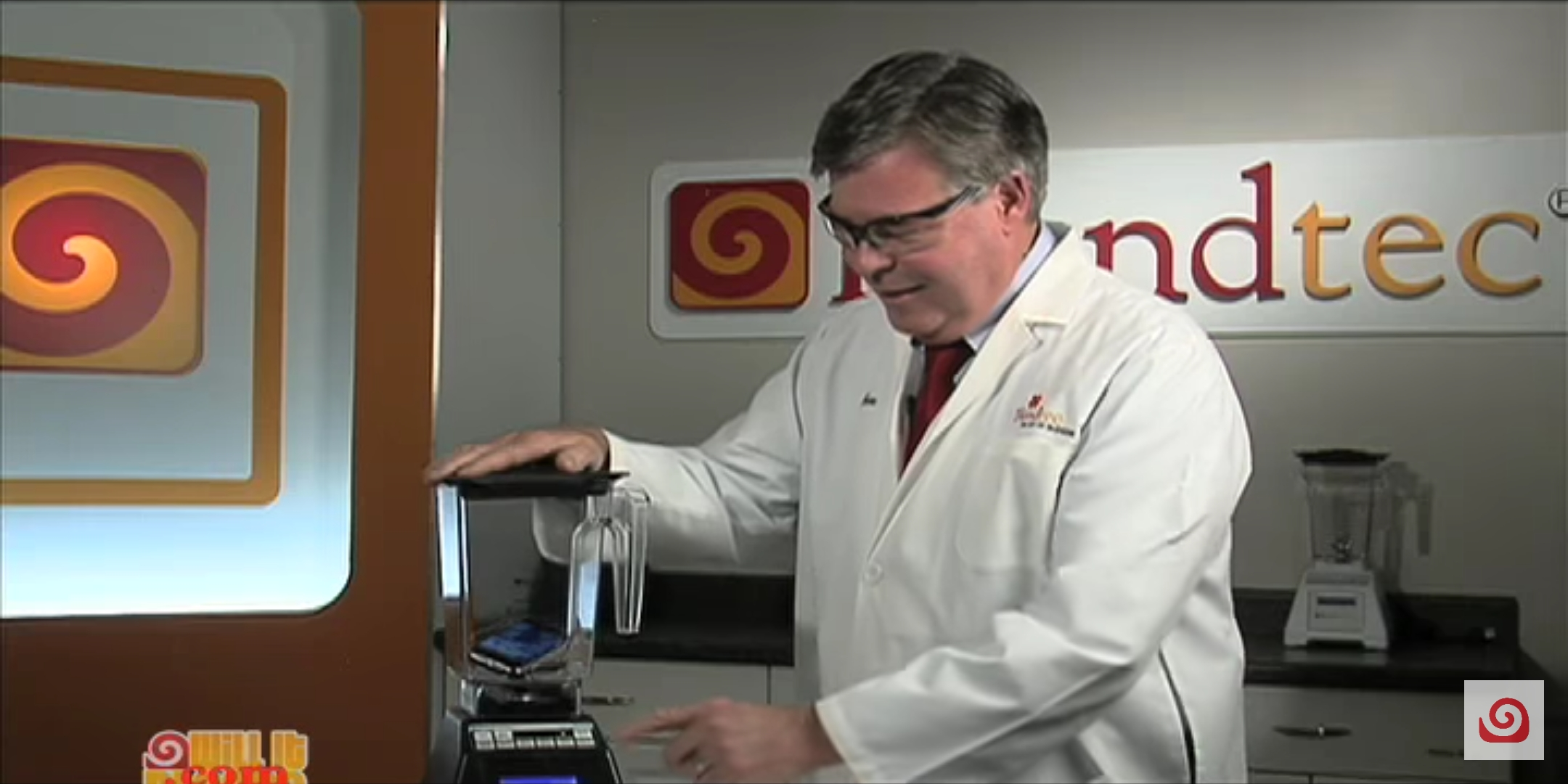
In each episode of this exciting series, Tom Dickson, the man behind Blendtec, takes on a new challenge, pushing the boundaries of what can be blended with a Blendtec blender.
The blender whirrs and hums as Tom adds new things, leaving the audience in awe of the power and effectiveness of the Blendtec machinery with each successful mix. Tom's blendability skills never ceased to astound everyone, whether he's blending albums or a tube of cream.
But the real star of the show was the Blendtec blender itself. Whatever Tom throws at it, the sharp blades and powerful motor simply crushed everything, leaving behind a smooth and beautifully mixed output.
How did the commercials go viral and help Blendtec blender sales skyrocket?
It became a viral campaign due to its entertaining and compelling nature.
People were curious to see what would happen when iPhones, marbles, and golf balls were placed in a Blendtec blender because the idea of mixing such materials is inherently exciting.
You can watch the full ad here -
Shot on iPhone
Apple's ad campaigns have frequently made headlines - be it Apple's "Get a Mac" promotion or the famous Super Bowl 1984 ad.
Apple's "Shot on iPhone" viral campaign has emphasized the iPhone's photo and video capabilities taken by both novice and experienced photographers.
Since the "Shot on iPhone" campaign was launched in 2016, a large number of people have uploaded their own "Shot on iPhone" images and videos to the internet.

Source: Apple
These advertisements, which include beautiful scenery and candid moments, show that the iPhone is more than just a phone; it's a portable photo studio.
Why was the "shot on iPhone" advertisement so distinctive?
The "Shot on iPhone" campaign is more than just a way to highlight the iPhone's photographic prowess. The absurd things individuals do with their phones are also hilariously pictured, making it candid.
These advertisements demonstrate the iPhone's readiness for any photography endeavor, regardless of how ludicrous it may be, featuring selfies with elephants and pictures of their breakfast croissants. Thus, Apple leveraged a user-generated content marketing strategy to get viral with minimal effort.
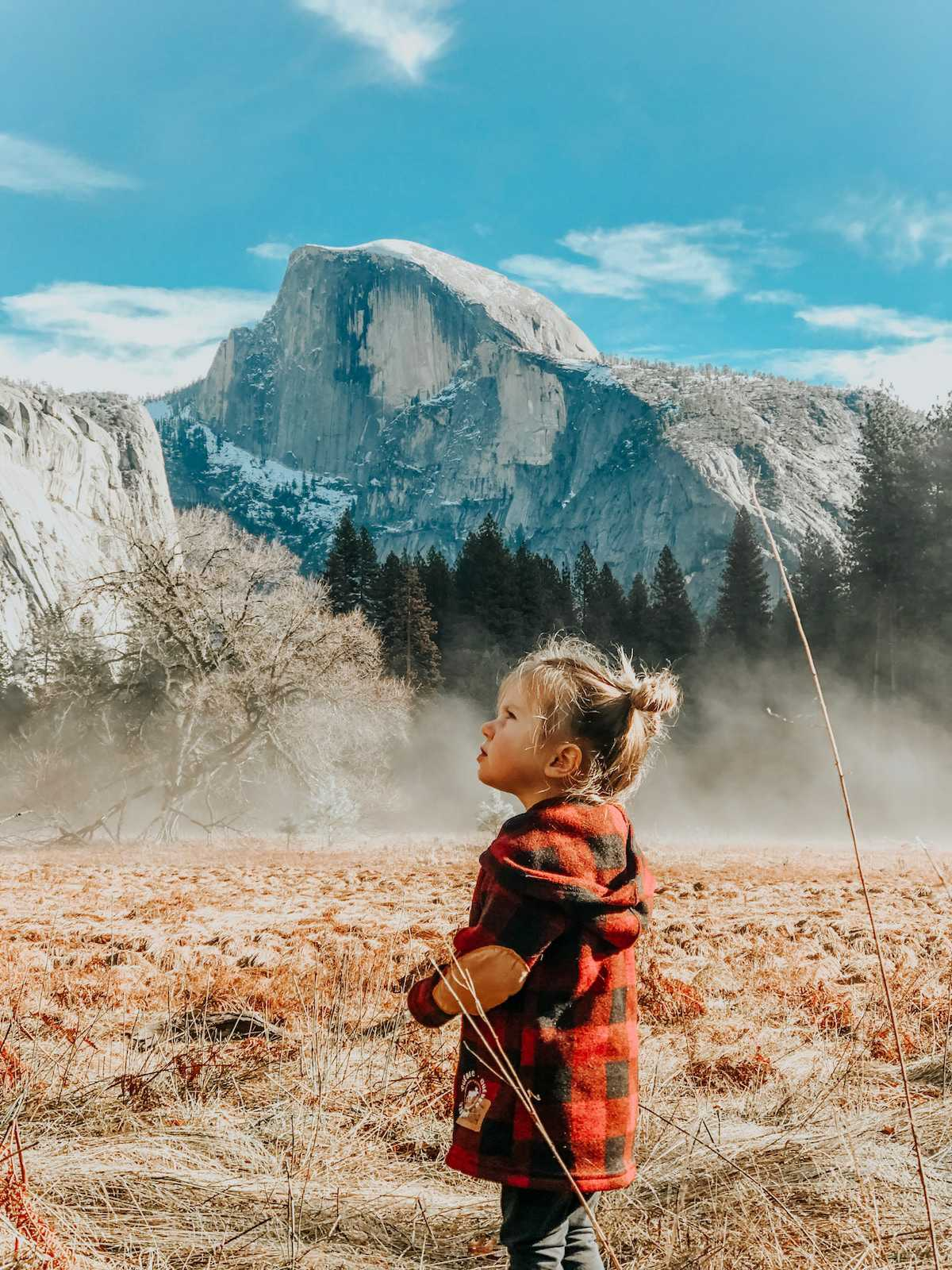
With the "Shot on iPhone" campaign, Apple uses its own users to promote its phone while making them feel proud of their photography skills enabled by its features.
ALS Ice Bucket Challenge
Do you recall the time when social media was abuzz with people pouring buckets of ice-cold water over their heads?
No, it wasn't some new fad or trend – it was the ALS Ice Bucket Challenge, a viral marketing campaign by ALS Association that swept the internet in 2014 raising awareness for ALS.
Why use ice water as a 'challenge'?
The cold water represents Lou Gehrig's disease, also known as amyotrophic lateral sclerosis, and depicts the horrific reality of having the condition (ALS). It is a degenerative disease that affects nerve cells in the brain and spinal cord and progresses over time.
ALS currently has a limited number of approved treatments, and there is no known cure.
By participating in the Ice Bucket Challenge, people did more than just show their support for those who have the disease; they also donated money to the ALS Association, a charity that funds research to find a cure.
The best part was the ability to designate three friends who would join you in the challenge, which would raise interest and support.
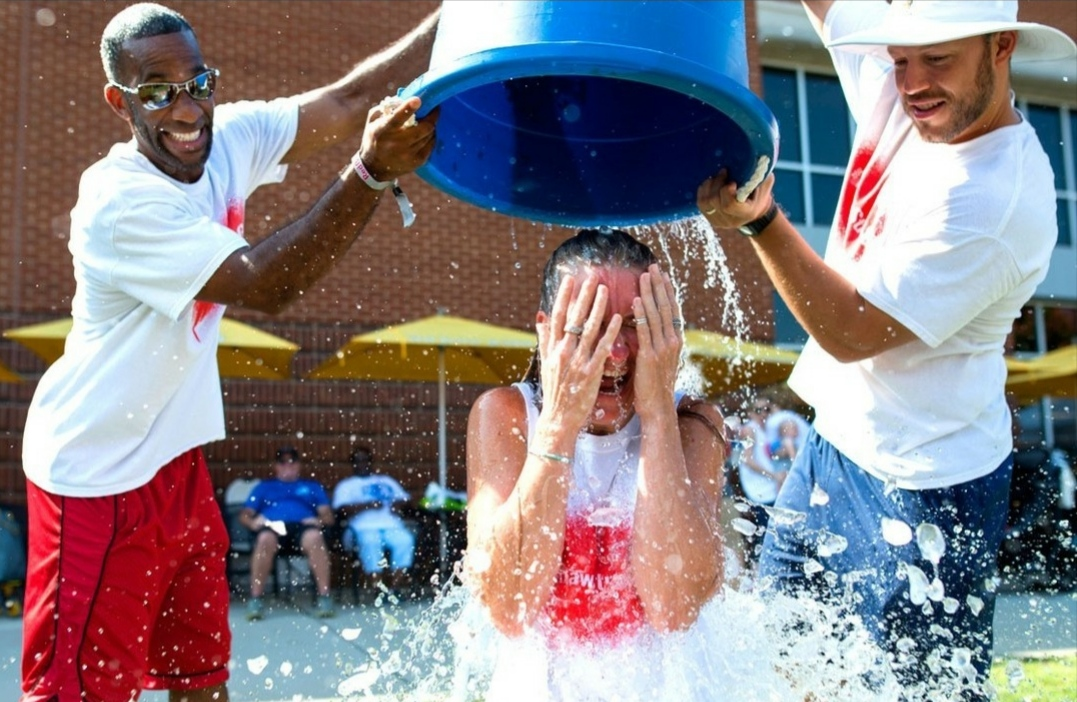
Source: ALS Instagram
The Ice Bucket Challenge, which became a worldwide phenomenon, was participated in by many celebrities, politicians, and everyday people alike. It was a creative way to create awareness of this serious medical condition, raise funds for research, and even have a little fun.
Dove Real Beauty Sketches Campaign
With this viral marketing campaign, Dove makes it clear that a woman’s worst enemy and harshest critic is herself.
In 2013, Dove, a personal care brand owned by Unilever unveiled "Real Beauty Sketches," a popular video, as a part of their "Real Beauty" promotion.
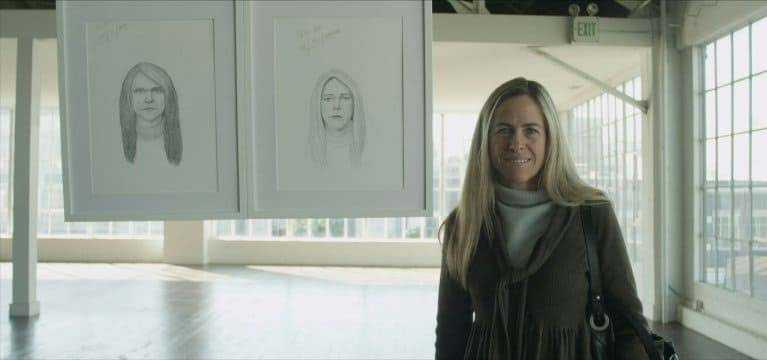
Source: Dove
In the video, a forensic artist draws sketches of real women based on both their own descriptions of themselves and the ones given by strangers who had only just met them.
Why did this campaign work?
The film showed how the women's self-portraits were frequently less realistic and flattering than those created using the descriptions of strangers. This idea was relatable to many women who are far from idealistic beauty standards, thus gaining 'relatability' points.
The Dove digital marketing campaign sought to raise awareness of the idea that women are frequently unduly critical of their looks to encourage them to have a more positive perception of it. Thus, the video was a great hit, garnering over 63 million views on YouTube and bagging Grand Prix at the Cannes Lions International Festival of Creativity.
Oreo dunk challenge
Ever heard someone capitalize on massive power outages?
Today we live in a world where power outages can stop our lives.
But Oreo, a well-known brand saw an opportunity to capitalize on the power outage.
On February 2013, during the third quarter of Super Bowl XLVII Oreo's social media team seized the opportunity to capitalize on the cultural event when Superdome lights went out for 34 minutes.
Tweeting an ad that read "Power Out? No problem" with an image of an Oreo and the caption, "You can still dunk in the dark."
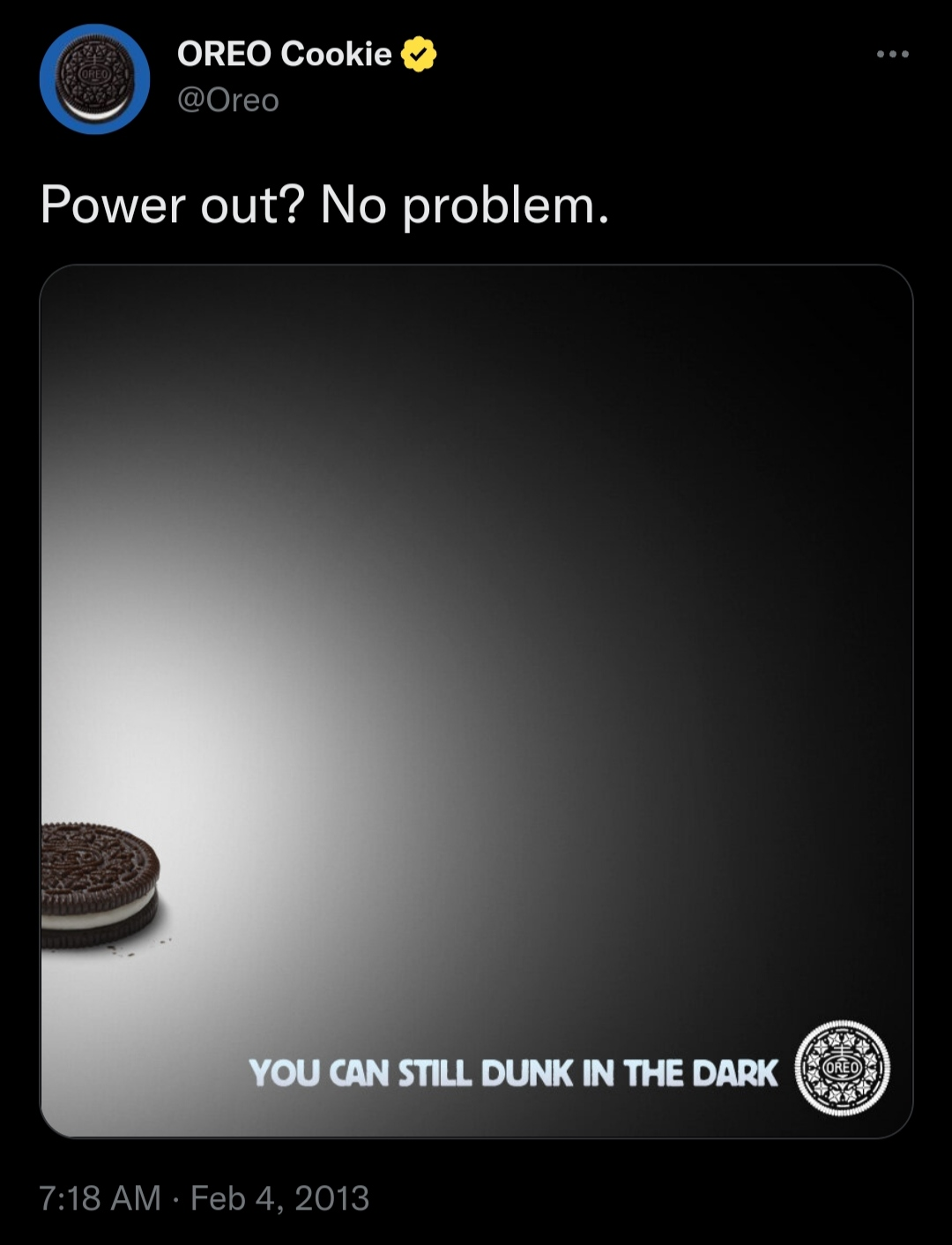
Source: Twitter
The tweet received more than 20,000 likes and nearly 15,000 retweets and shares on Facebook and Twitter in less than an hour.
How was Oreo able to pull off this viral marketing trick?
It turns out that they had a 15-person social media crew ready to reply to any online comments on the Super Bowl, regardless of whether there was a magnificent play or only half the lights were on.
In a world where marketers are ready to spend millions to run an advertisement during the Big Game, it was a good plan by Oreo to respond in real time on social media.
Oreo is a great example that shows how one tweet and no money are all that is needed to start a viral marketing campaign.
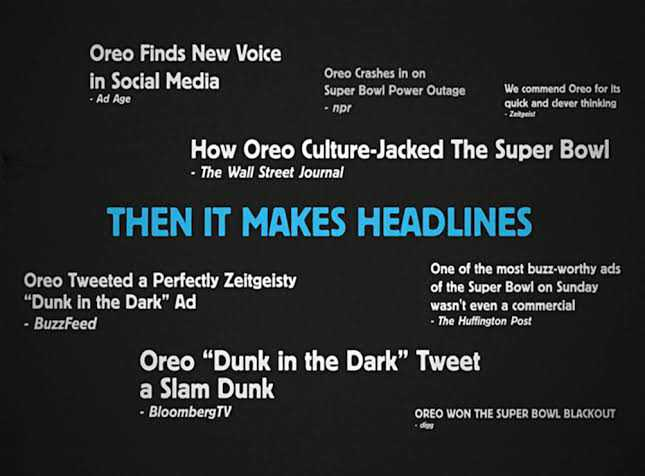
Source: Effie
Always like a girl
In 2013, the Always brand of feminine hygiene launched the Always Like a Girl social media marketing campaign.
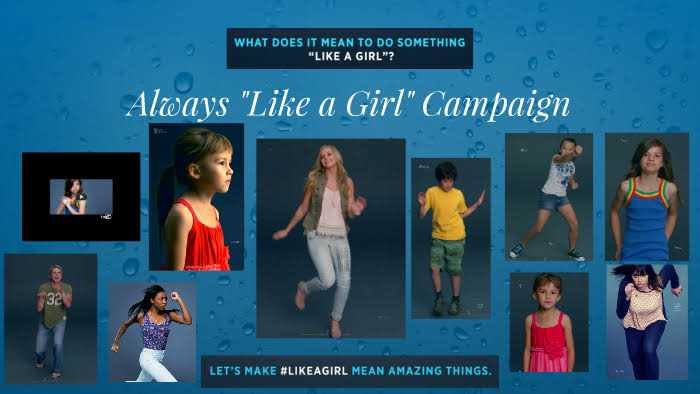
The campaign featured several short documentaries that show how girls and especially women are frequently subjected to negative gender stereotypes by society and how these beliefs can affect their self-esteem and confidence.
The series emphasizes the strength and power young girls and women possess when they accept their identities and abilities and depict them partaking in sports and activities that are typically reserved for men, such as football and running.
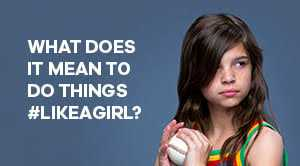
Source: Always
Why "Always #LikeAGirl" became one of the top viral marketing campaigns?
Because it addressed a problem that many girls and young women face: the pressure to conform to social norms and gender stereotypes. And how "do it like a girl" seemed like an insult.
Due to its uplifting and inspiring messages, the advertisement quickly attracted a considerable following on social media and other channels making it one of the most successful viral campaigns.
https://youtu.be/F_Ep0O5fWN4
Wendy's Chicken Nugget Retweet challenge
It's proven that technology and the internet can do wonders. From getting information about what's happening miles away to get free nuggets for a year…
Yes, you heard it right!
Getting free nuggets.
A guy named Carter Wilkerson, from Reno, Nevada, asked Wendy's Twitter account how many retweets he would need for a free year’s supply of chicken nuggets.
Wendy's responded with “18 million"
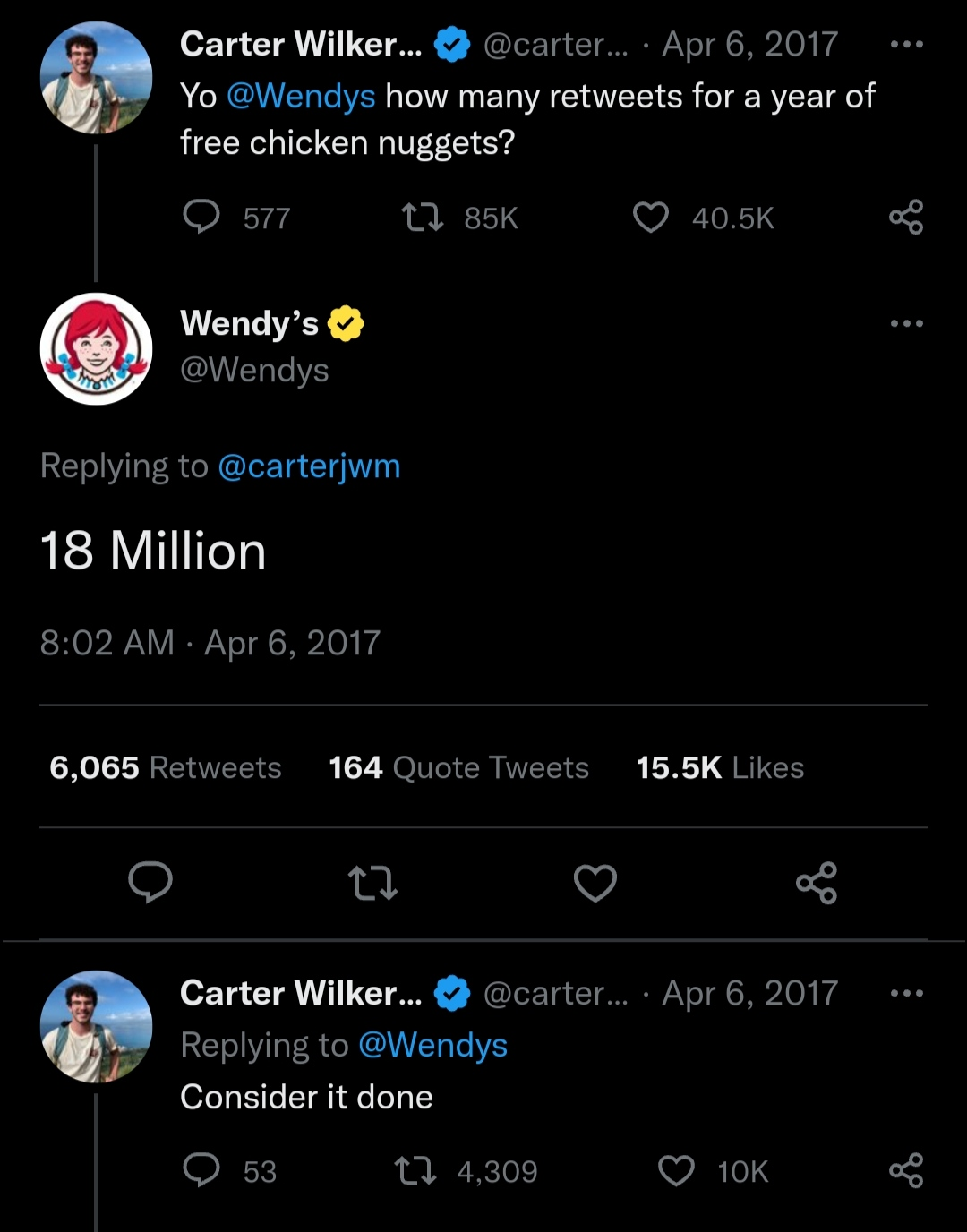
Source: Twitter
And twitter worked its magic to make it the most retweeted tweet.
Even though the challenge's 18 million retweet goal was ultimately missed, it nevertheless attracted a lot of attention, strengthened Wendy's social media presence, and increased brand awareness.
What did Wendy's do right?
Even though Wendy's did not take the initiative, marketing is all about seizing any possibilities that come your way.
Wendy's decided to seize the chance irrespective of the outcome.
Most interesting man in the world
The lead role in the Dos Equis beer commercial titled "The Most Interesting Man in the World" was played by Jonathan Goldsmith.
The advertising campaign consisted of several television commercials that featured the persona—who is presented as cool and daring—speaking to the camera and recounting his numerous accomplishments.
The campaign's catchphrase, "I don't drink beer all the time, but when I do, I prefer Dos Equis" helped it become known worldwide. It caused a large number of memes to emerge.
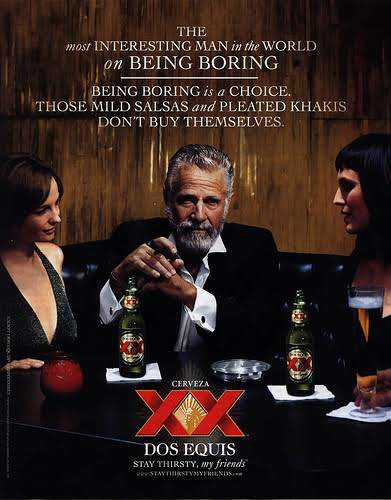
Source: Effie
Why were people able to form a connection with the campaign?
In contrast to its competitors, the campaign employed a novel strategy by persuading people that this is the kind of man they might want to be.
The humorous and distinct tone of the advertising proved effective in attracting viewers' attention.
It helped them form a powerful brand connection with the alcoholic beverage Dos Equis.
E.L.F TikTok Viral Marketing Campaign
E.L.F. deserves to be one of the top viral marketing campaign examples as it is a master at leveraging social media to promote its brand.
E.l.f, a modest brand in a crowded market, struggled since it was smaller and didn't have a huge budget.
How did they stand out from the competition, gain a following, and outperform them all at the same time?
After realizing that music played a key role in TikTok's virality, E.l.f. decided to become the first company to ever create an original song for a TikTok challenge to demonstrate to customers that e.l.f. stood for "eyes. lips. face."
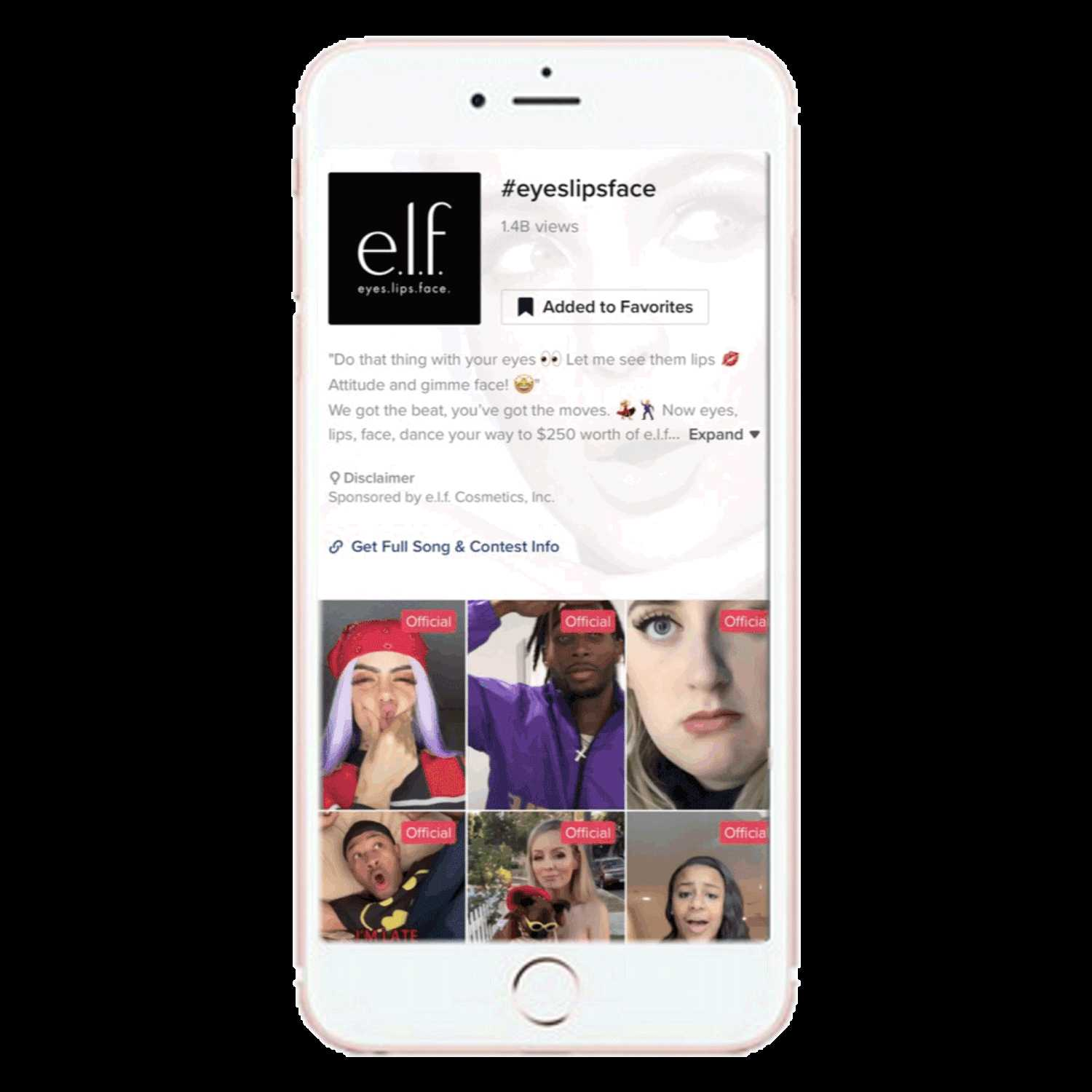
Source: Movers and Shakers
The song specifically was one powerful tool as it attracted people which led them to post videos using makeup products from e.l.f and grooving to the e.l.f song.
The company afterward uploaded some of the user-generated footage on its own TikTok account and gave awards to the tiktokers of the most inventive and attractive flicks.
With 5 million user-generated videos and 7 billion views, EyesLipsFace became the most viral marketing campaign in TikTok US history.
Old Spice's - A man your man could smell like
With a desire to compete with their rivals and shift their marketing focus from males over 50 to the younger age. Old Spice developed a clever marketing strategy. Instead of going after the guys directly, they devised a detour to generate a discussion about body wash among couples and persuade women to stop buying their men "lady-scented goods."
It led to the "Man Your Man Could Smell Like" ad campaign, which ran on February 8, 2010.
Isaiah Mustafa, a former NFL player, played the "Old Spice man" in it. The ads were funny and showed Mustafa in various situations, frequently saying wisecracks and other amusing things.
The campaign was a resounding success and contributed to the brand's increased appeal. It also bagged an award at the Cannes Lions International Advertising Festival in the film category.
Source: YouTube
This brand, however, didn't stop there. Their marketing strategies kept pushing the frontiers of creativity and humor, leading to several viral parodies and imitation videos.
Old Spice demonstrated that they weren't afraid to take chances and have fun with their humorous campaigns by having Mustafa ride a horse backward in slow motion.
Tips for creating your successful viral marketing campaigns
There's no magic formula for making viral content, but there are some key strategies you can use to increase the chances that your content will catch on and spread like wildfire.
-
It's essential to think unconventionally and imaginatively and to be eager to test your products. Marketers can do this by generating ideas by brainstorming or getting inspiration from great examples of viral marketing.
-
It's crucial that your target audience can relate to your marketing campaign if you want to create viral content. The information should surprise the target audience, evoke strong feelings, or be perceived as beneficial or maybe humorous.
-
Use social media platforms to your advantage. By disseminating the content on multiple social media channels like Facebook, Twitter, and Instagram and maximizing its visibility through hashtags and other strategies, you may raise the probability that it will be seen and go viral.
-
Partner with influencers to spread the word about your content. Getting well-known people with sizable social media followings to share your content could help you reach a wider audience and increase the possibility that it will go viral.
-
Be prepared to seize all the opportunities that come your way. However, be cautious because not all viral campaigns provide fruitful outcomes; occasionally, a campaign can go viral for negative reasons damaging your brand image.
Get with your own viral marketing strategy today
So, these viral marketing examples tell us that if you want to produce viral content that will attract potential customers, concentrate on making it extraordinary, use your creativity, take advantage of social media, and collaborate with influencers.
The correct combination of strategies could help you produce content that quickly attracts a sizable audience and goes viral.
You can look at the marketing strategies of Nike or Apple to have a better understanding of how firms frequently develop viral campaigns.





 Entrepreneurship
Entrepreneurship

